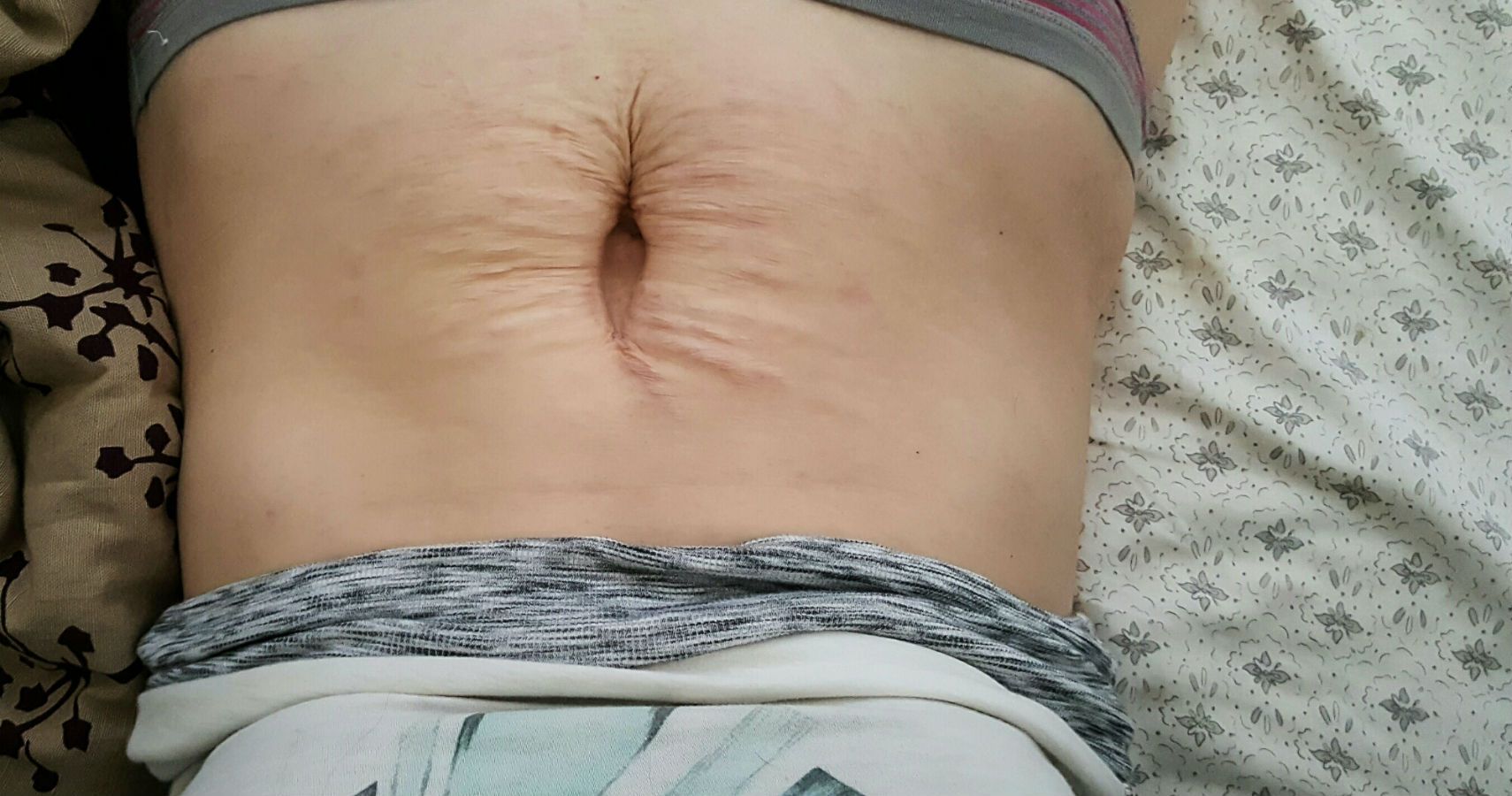In previous posts, I've written about my own struggle to overcome diastasis recti, or abdominal separation often associated with pregnancy. Most mothers experience this at least temporarily after having a baby. During pregnancy, the abdominal muscles split to accommodate the growing baby bump. After birth, the abs typically come back together and slowly regain their previous appearance and function. Unfortunately for some moms - myself included - this ab separation is so severe that it doesn't self-correct postpartum. Yes, diastasis recti can be unsightly; wrinkled flabs of skin, a belly apron, a sunken belly button, a stomach that still looks pregnant. But even more concerning, diastasis recti can create serious health issues like hernias, back pain, and pelvic floor dysfunction.
Diastasis recti (DR) changes the way the body functions and moves. Because it is essentially a disruption of the body's core, DR creates a host of other issues. The longer a mother lives with DR, the more wear and tear she's putting on parts of her body that are strained in an unnatural way. Having DR means that a mom can't lift heavy things (like toddlers), can't exercise like "normal", and will experience back pain. That one is a certainty! When your abs aren't engaged and working properly, your back takes on much of the burden of holding you upright. It isn't supposed to be the sole support in this function, so it becomes easily fatigued and your back muscles begin to misfire or lock up.
My own diastasis was so severe that it affected my hips and back - and even went so far as to do serious damage to my feet! How in the world can weak abs make your feet hurt? I wouldn't have believed it either before taking months of physical therapy to repair the damage. Remember that little jingle: "The knee bone's connected to the leg bone, the leg bone's connected to the ankle bone..." It sounds silly but the basic principle of interdependence within your body's stabilization systems holds true!
Abdominal separation puts more of the workload on your back - instead of your core wrapping around you to hold you upright, your back ends up trying to do all the work itself. Because your back is tightening and your abs aren't countering that tension, the front and sides of your hips begin to shift into a different position. Your hip flexors start to become stretched and overworked, as they try to take over some of the forward-tension that your abs ought to be doing. With your hip flexors involved, you find some pelvic floor dysfunction. The supporting tissues simply aren't doing the appropriate job to keep everything where it ought to be and working well. Since your hips are now out of whack, your knees begin to try to compensate, which leaves your ankles compensating, which means your feet are forced to take the rest of the strain onto themselves. WHEW! That was a lot!
Long story short: diastasis recti changes the way you can move and use your body. It limits mobility, it jeopardizes stability, and it creates a domino effect of harmful compensatory musculoskeletal complications. At its worst: it leads to chronic back pain, pelvic floor dysfunction (including prolapses, incontinence, and rectoceles), poor posture, and hernia. Lest your think hernias are just the butt of some silly joke: they're serious. A herniated organ can rupture, causing hemorrhage, sepsis, or even death. It's not something to play around with.
Despite this laundry list of debilitating side effects, most insurance options (in the United States - where I live) don't cover corrective surgery. Some don't even cover physical therapy, which is often the conservative first step to healing DR! The infuriating reason why? Because the corrective surgery for diastasis recti is more commonly known as a "tummy tuck". That's right! Because plastic surgeons perform this procedure with cosmetic purposes, insurance won't cover the operation. Few have succeeded in appealing their insurance's decision. Yes, it's true - having a tummy tuck would change a person's abdominal appearance. But it would also prevent hernias, restore proper back function, and allow pelvic floor muscles to relearn their proper purpose.
Is it uncovered because it seems to be aesthetically driven? Or is it uncovered because, even though up to 60% of women experience diastasis recti, it's just not important enough? After all, haven't women lived with DR for millenia? Why should we correct an issue that's just "a given" for women who choose to bear children? Isn't that simply the price we pay for becoming mothers?
Deep breaths, Amanda.
It's hard to explain how maddening it is to suffer in pain from a fixable condition - and also to know that your insurance simply won't allow you to fix it. For now, I've made progress with physical therapy. But PT alone cannot repair my case of DR - it's too extreme. Instead, I wait for the day insurance providers will come to their sense and help mothers restore their core.

